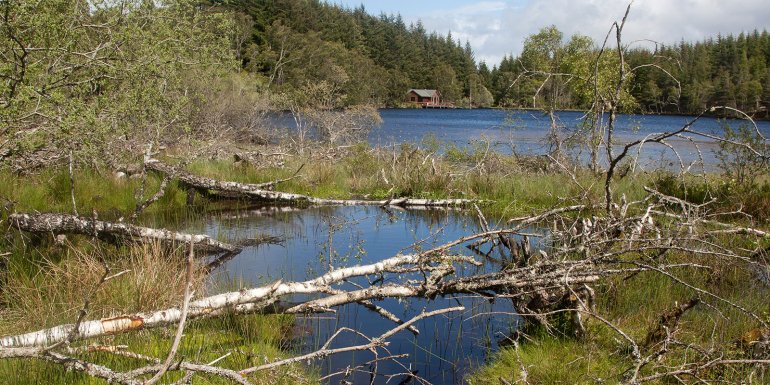Dam busters

The UK Environment Agency has been trialling ways to work with the environment to tackle flooding in urban and country environments. So have they cracked it?
The Environment Agency has been running a four-year pilot of 60 natural flood management projects to control flooding. Natural flood management measures include:
- in-stream structures (for example, woody debris)
- blocking of moorland drainage channels
- woodland planting
- land and soil management practices (for example, cover crops, hedgerows or suitable crops)
- river morphology and floodplain restoration (for example, removal of embankments and re-meandering)
- inland storage ponds and wetlands
- protecting riverbanks (for example, stock fencing)
- sustainable urban drainage systems (for example, swales, wetlands in urban areas, green roofs, permeable pavements, detention ponds or filter strips)
- saltmarsh restoration; and
- coastal change management.
26 of the projects were catchment scale pilots led by risk management authorities and 34 were community scale pilots led by local groups and charities (see Catchment and community projects). Collectively the pilots slowed and stored water upstream of 15,000 homes in areas at risk of flooding – equivalent to 1.6 million cubic metres. They also created or improved 610 kilometres of river, created or improved 4,000 hectares of habitat and saw 100 hectares of woodland planted. £15m of government funding was put into the pilots, with each project costing an average of £250,000 – far less than conventional hard engineering such as flood walls.
Details of the pilots were shared at the same time that the National Infrastructure Commission (NIC) released its report findings that, in England alone, more than 300,000 properties face a 60% risk of flooding thanks to a combination of climate change, increased pressure on drains and building developments encroaching onto flood plains. It asserts that this figure will increase unless there is investment to improve drainage systems over a 30-year period. The report also calls for increased education to address bad practice such as developments continuing at pace with little strategy in place for suitable drainage systems and the impact of the hard landscaping of gardens, which makes them impermeable.
The natural flood management pilots do seem to offer some solutions. For example, the Shipston Area Flood Action Group in Warwickshire built 700 leaky barriers and ponds to slow the flow of water on the River Stour during heavy rainfall, reducing the flood risk to 17 villages and towns.
In Sutton, Greater London, sustainable drainage systems (SuDS) were installed in six schools to capture rainwater runoff from surfaces such as roofs, roads and pavements, preventing the drainage network from becoming overwhelmed. These also served to filter out contaminants before the water enters drains and then rivers. “This scheme, including planters and rain gardens built on playgrounds, is now preventing more than four hectares of hard surfaces sending rainwater into the River Wandle, helping reduce pollution in this chalk stream,” the Guardian notes.
Working partnerships
The report also details the Evenlode Catchment Partnership, which initially set out to improve water quality but, in the process, reduced flooding and soil and nutrient runoff. On a tributary of the River Evenlode, in Oxfordshire’s lowland agricultural landscape, the project team worked with farmers to trial a suite of soft engineering measures including:
- 10 nutrient retention ponds
- 1.1 kilometres of sediment traps
- 15 field corner bunds storing 30,000 cubic meters of floodwater
- 27 leaky woody dams
- 14.4 hectares of tree planting; and
- a new footpath and interpretation boards for the local community.
The project team also de-culverted 100 metres of watercourse by removing a covered pipeway and reinstating an open ditch. The project reduced flood risk, but what was most notable was the working partnership with farmers, who maintained the measures on their land.
Further plans include the Environment Agency/Defra’s £150m Flood and Coastal Resilience Innovation Programme, which will enable local authorities, businesses and communities in 25 places to test and demonstrate innovative practical resilience actions. For example, in Cumbria there will be trialling of how catchment-sensitive farming officers can work with farmers and local communities to co-design natural flood management (NFM) opportunities. In York and North Yorkshire Catchment Flood Management, there will be testing of how catchment-scale NFM can create wider benefits for downstream beneficiaries. This is all part of the £5.2bn Flood and coastal erosion risk management: an investment plan for 2021 to 2027 report to better protect hundreds of thousands of properties from flooding and coastal erosion.
The report notes that “reducing flood risk through nature-based solutions is not new to flood and coastal risk management practitioners. For years, we have managed many of our beaches to take the energy out of stormy seas to protect our coasts. Many places around the country have also reconnected rivers with their natural floodplain to make space for water away from vulnerable built-up areas.
“What has changed is our understanding of how to work with other stakeholders to implement an effective blend of NFM measures in the right locations. Too often, people talk about making a choice between hard (conventional) defences or nature-based solutions, as if there were conflict or competition between them. The NFM programme has helped us understand the role that NFM can play in complementing conventional flood or sea defences.”
Read the Natural Flood Management Programme evaluation report at bit.ly/GOV_natural_flood_management
Catchment and community projects
Catchment projects:
- Alconbury Brook
- Bacton Sand Engine
- Clothworkers Wood
- Cumbria Floods Partnership Action Plans
- Dartmoor Headwaters
- Dorking Flood Alleviation Scheme (FAS)
- Evenlode
- Interventions across East Suffolk & Norfolk
- Marine Pioneer – North Devon – Taw Torridge
- Marine Pioneer – Suffolk – Slaughden
- Medway
- North Yorkshire – Backstone Beck
- North Yorkshire – Brompton
- North Yorkshire – Upper Ure/Bishopdale
- Radcliffe & Redvales
- River Lugg & Wye
- Rover Soar Tributaries
- Shipston
- Shropshire Slow the Flow – Severn Tributaries
- Slow the Flow Greater Manchester, Merseyside & Cheshire (GMMC)
- Swaton Flood Resilience Scheme
- Tidal Flood Management and Saltmarsh – Suffolk
- Weardale NFM Demonstrator
- Williton, Monksilver and Doniford Flood Alleviation Scheme (FAS)
- Wooton Brook; and
- Worcestershire Avon/Cotswold Escarpment Tributaries.
Community projects:
- Bishop’s Wood
- Bourne Rivulet Restoration & Flood Management
- Collingham Beck
- Derwent Villages
- Dunston Floodplain Reconnection
- Fillongley & River Bourne
- Havergate & Orford
- Hawden Stream
- High Rogerscale Floodplain Reconnection
- Kenwith Valley
- Lowdham
- Lower River Crane Restoration
- Management of A33 Surface Water Run-off
- Northey Island Saltmarsh Regeneration
- Ottery St Mary
- Pang Valley
- Papermill Dyke
- Pymmes Brook Deculverting
- Rise Park Stream
- River Leck Catchment
- River Pinn Park Woods
- Salmons Brook
- Slowing the Flow – Upper Dane
- Slowing the Flow – Upper Dean Catchment
- SuDS in Sutton’s Schools
- Midgelden Brook
- Twyver Catchment
- Upper Piddle Headwaters
- Upper Thames Catchment
- Wallington Catchment Management Scheme
- Woodland & River Management in Two Headwater Streams
- Wyre
- Yarrow Meadows; and
- Yazor Brook Flood Alleviation.










